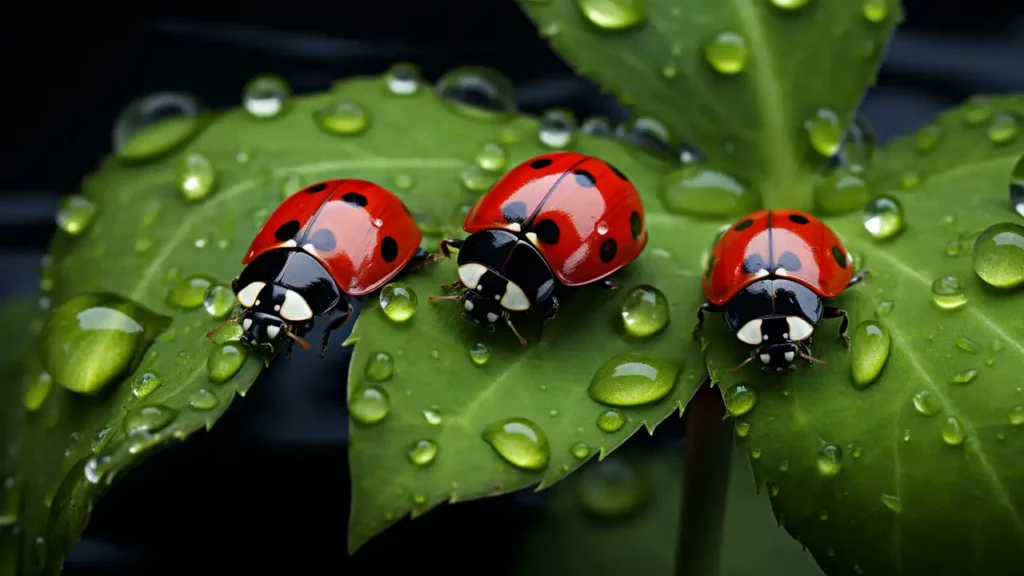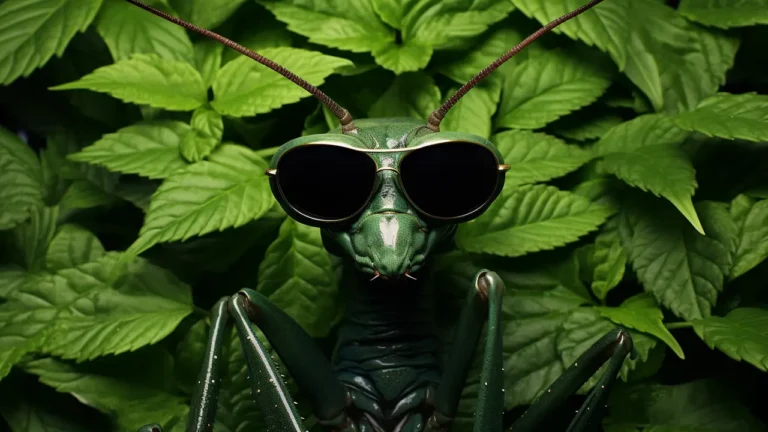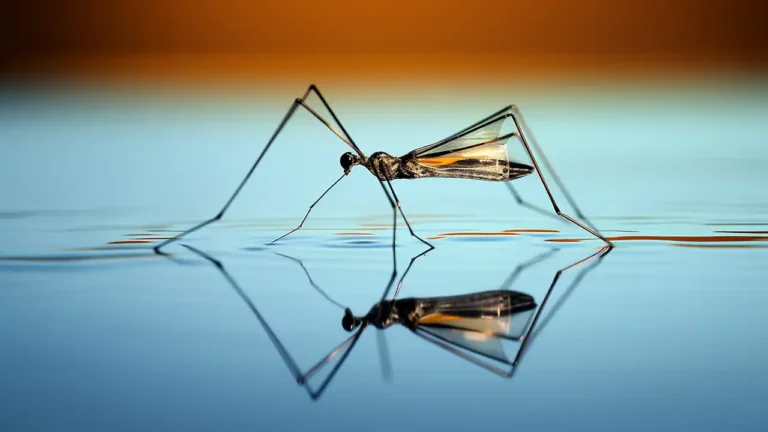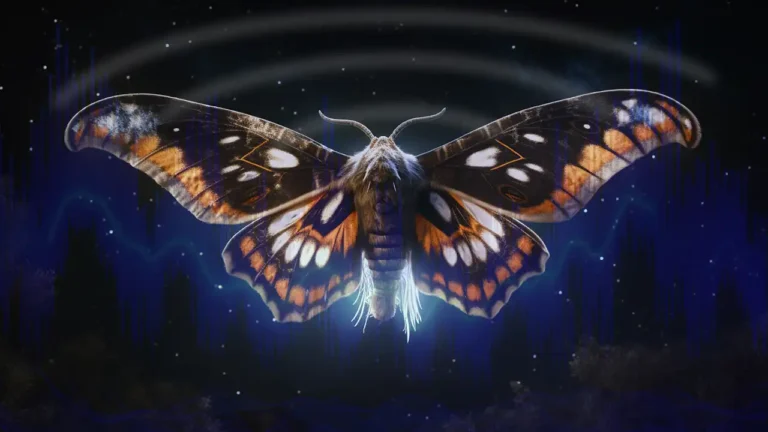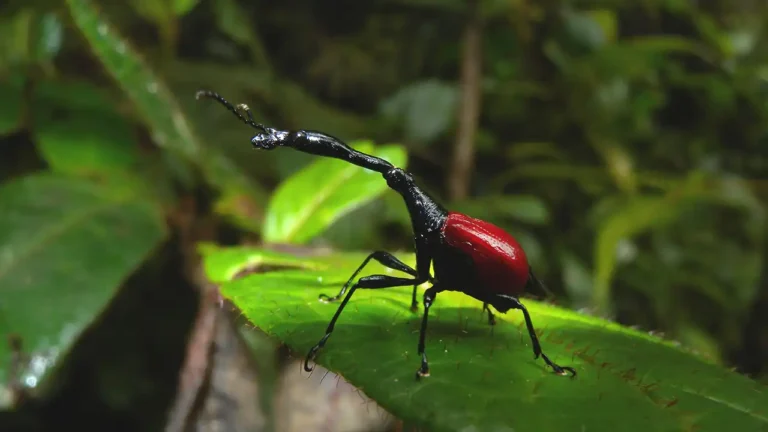Have you ever seen a cute little red and black bug crawling around outside? With tiny spots and a round shape? If so, you’ve probably seen a ladybug!
Ladybugs are some of the coolest and most helpful bugs around. Even though they are very small, these little beetles have superpowers that help our gardens and plants thrive!
Here, you’ll uncover amazing secrets about ladybugs that you never knew before. Like how baby ladybugs look completely different from the adults! And how entire swarms of ladybugs work together for survival.
Get ready to enter the mini world of these tiny spotted superheroes! We’ll explore what ladybugs eat, where they live, their life stages, special powers, and much more. You’ll even learn how you can help ladybugs on their important missions.
With colourful photos, cool facts, crafts, and activities, this article will reveal why ladybugs are so special. You’ll discover how their spots, flying skills, and pest-fighting powers make them heroes in the insect world.
So let’s start this super fun ladybug adventure! By the end, you’ll understand why ladybugs are amazing little helpers that we should treasure in our gardens.
Meet the Ladybugs!

What Are Ladybugs?
Watch out, there’s a strange and mystical beast roaming through the backyard! Just kidding, it’s only a ladybug. But aren’t they so cute and cool?
Ladybugs, also called ladybirds or lady beetles, are itty bitty winged beetles that are usually bright red or orange with black spots on their backs. They almost look like little fairies wearing polka-dot pajamas! There are around 5,000 kinds of ladybugs in the world – that’s a lot of spotty species!
Most ladybugs are uber small, between 1 to 10 millimetres long. That’s about the size of a pencil tip or smaller than your pinky fingernail! Though red and orange are the most popular, ladybugs can also wear other colours like yellow, grey, white, or black.
Their spots are like superhero capes warning birds “Don’t eat us, we taste gross!”
Some super cool ladybugs you might see are:
Seven-spotted ladybugs: These bright red sidekicks have 7 black spots in a cool pattern.
Asian lady beetles: An orange species from Asia with varying spots that can swarm in huge groups!
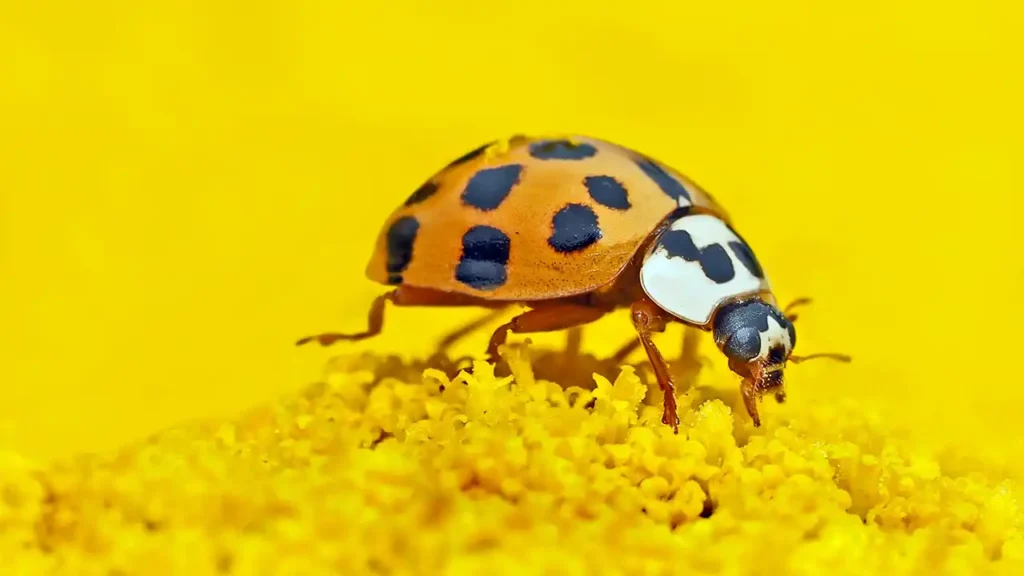
Eyespot ladybugs: Orange and black masks with freaky white “eye” spots to scare predators. It’s like a ladybug camouflage pretending to be a much scarier bug!

Where Do Ladybugs Live?
Ladybugs may be tiny, but they live all over the gigantic world! You can find these busy beetles on every continent except Antarctica. Brrr, too cold for ladybugs!
Ladybugs thrive in many habitats, including magical forests, grassy meadows, and backyard gardens. Anywhere there are yummy plants and juicy aphids to munch on is an awesome place for a ladybug to live!
When winter arrives, ladybugs need to escape the cold. They team up in big groups and hibernate together inside cozy logs, rocks, tree cracks, or even people’s homes! Then when spring comes, the ladybugs emerge from their hideouts ready to explore again.
Can you imagine a ladybug slumber party? I wish I could hibernate with my friends all winter! Ladybugs are so lucky.
Now we know where to spot these cool critters! Next let’s uncover some mind-blowing ladybug secrets…
Fun Fact Corner
We’ve explored what ladybugs are and where they live. Now get ready for some crazy ladybug facts that will bug out your brain!
- In some places, ladybugs are called ladybirds! This cute nickname probably comes from them being pretty like little birds.
- Baby ladybugs look totally bizarre. The larvae are alien-like alligators with stripes, spikes, and funky hairdos!
- When predators come along, ladybugs defend themselves by oozing stinky yellow goo from their legs. It stains clothes and tastes super gross!
- An adult ladybug will eat over 5,000 insects in its lifetime! Their huge appetite controls pesky bugs.
- Ladybugs can fly up to 85 miles per hour! That’s like a race car zooming by. Vroom vroom, ladybug!
Was your mind blown? Ladybugs truly have some mystical secrets! Now that we’ve met these special insects, let’s learn all about their wacky lives…
The Life Cycle of a Ladybug
Ladybugs go through a magical transformation during their life that lets them take on new forms! This process is called metamorphosis.
It all starts when a female ladybug lays a cluster of tiny yellow eggs on a plant. About 4-5 days later, the eggs hatch into larvae. These babies look nothing like adult ladybugs!
The larvae are elongated and alligator-shaped, with a body covered in stripes and cool spikes and tuffs of hair. They are eating machines, devouring over 40 aphids a day to fuel their growth!
Over 2-3 weeks, the larvae molt four times, shedding their exoskeletons as they keep getting bigger. Then, the larva attaches itself upside down and seals into a pupa. This is like a sleeping cocoon!
Inside the pupa over 1-2 weeks, the ladybug transforms again, emerging as a fully grown ladybug ready to find food and a mate! Their lifecycle is now complete. From egg to larvae to pupa and finally adult ladybug!
The adult ladybugs live for about a year. In that time, the females can lay hundreds of eggs, beginning the cycle again!
It’s incredible how ladybugs can change their bodies so many times, going from creepy crawly larvae to spotty-winged beetles. No wonder ladybugs are mythical creatures!
What do baby ladybugs look like?
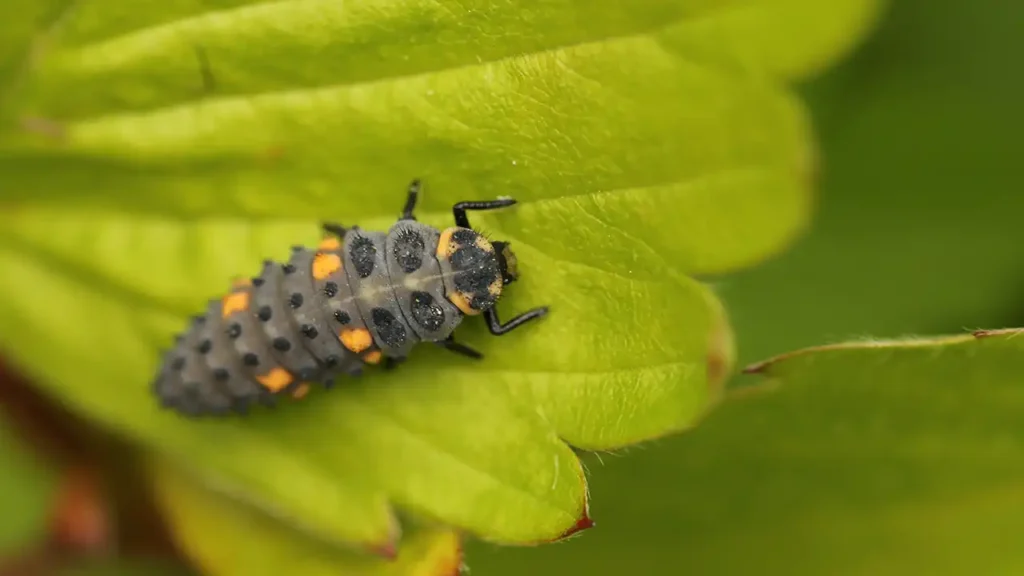
When ladybug eggs first hatch, you’d hardly recognize the babies as ladybugs! The newborn larvae look more like tiny alligators than spotted beetles. Their long, oval bodies are covered in stripes of black and orange. They have spiky tufts and bristles sticking out from their sides that look like weird hairdos. At the tail end are little curved spikes for clinging onto leaves.
These strange larvae scurry around munching on plants. As they grow over 2-3 weeks, they shed their skins a few times. Underneath that odd exterior, their ladybug wings and spots are developing. The magic of the ladybug life cycle transforms them step-by-step into recognizable ladybugs that will fly away!
A Day in the Life of a Ladybug
When the sun comes up, the ladybug wakes from under a leaf, yawns and stretches its spotted wings. Time for breakfast!
The ladybug flutters over to a juicy plant covered in aphids. “Yum, my favourite!” it thinks. The aphids try to run away, but the ladybug catches them with its grabby legs and munches them up. A tasty start to the day!
Feeling energized, the ladybug takes off flying. Its wings beat 85 times per second, letting it zip around the garden at up to 60 miles per hour! The ladybug spots enemies like spiders and wasps and steers clear of danger.
Getting thirsty, the ladybug lands on a dewdrop for a refreshing drink. A predator bird looms overhead trying to eat the ladybug for lunch! But the ladybug quickly releases stinky yellow goo on its legs, and the foul taste makes the bird shriek and fly away. Phew, safe!
In the afternoon, our ladybug friend explores the world, searching for the perfect place to lay its eggs. It flies from plants to trees to fences, scoping out spots free from lurking predators.
As the sun sets, the tired little ladybug crawls under a cosy leaf to sleep for the night. Its wings fold closed over the back of its polka-dotted shell. Tomorrow will bring another exciting day of adventures!
The Ladybug Superpowers
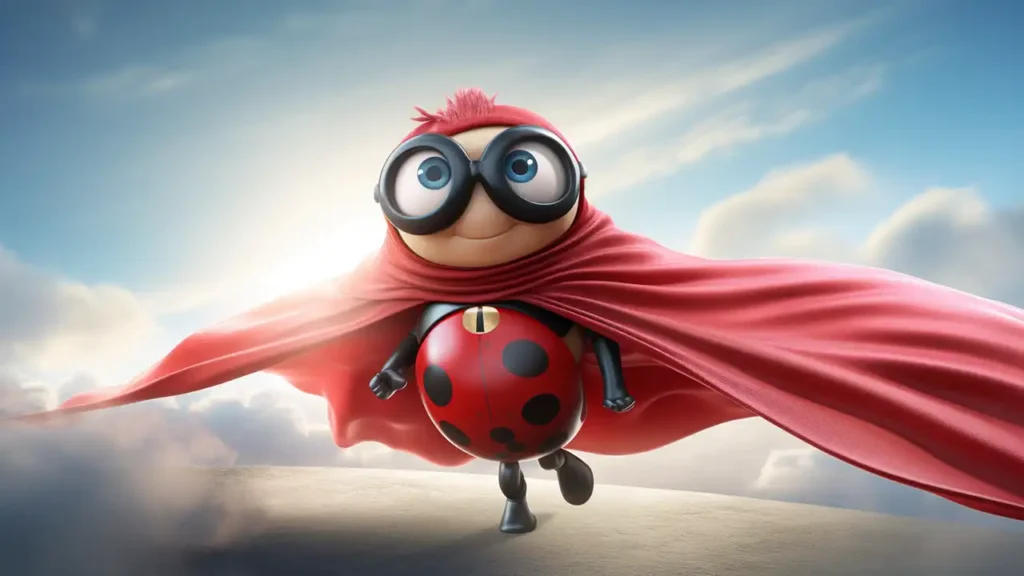
The Predator Power
With their spotted capes and appetites for destruction, ladybugs are like tiny superheroes in your garden! What makes them so special? Ladybugs are predators that hunt down and eat plant pests like aphids, keeping your flowers and veggies safe.
Aphids are creepy looking insects that suck juice from plants. A serious aphid infestation can weaken and even kill the plants. But have no fear – the ladybug is here!
A single ladybug can eat over 50 aphids per day, destroying the pests in no time. And a ladybug colony with thousands of individuals? They can wipe out an aphid infestation completely! Their huge appetite for aphids is why gardeners love ladybugs.
Ladybugs are crucial for maintaining balance in nature. By controlling aphids and other annoying bugs, they allow gardens and farms to thrive. Their spotted shells and insect-munching powers make ladybugs helpful predators we need to treasure!
Fly Away Home
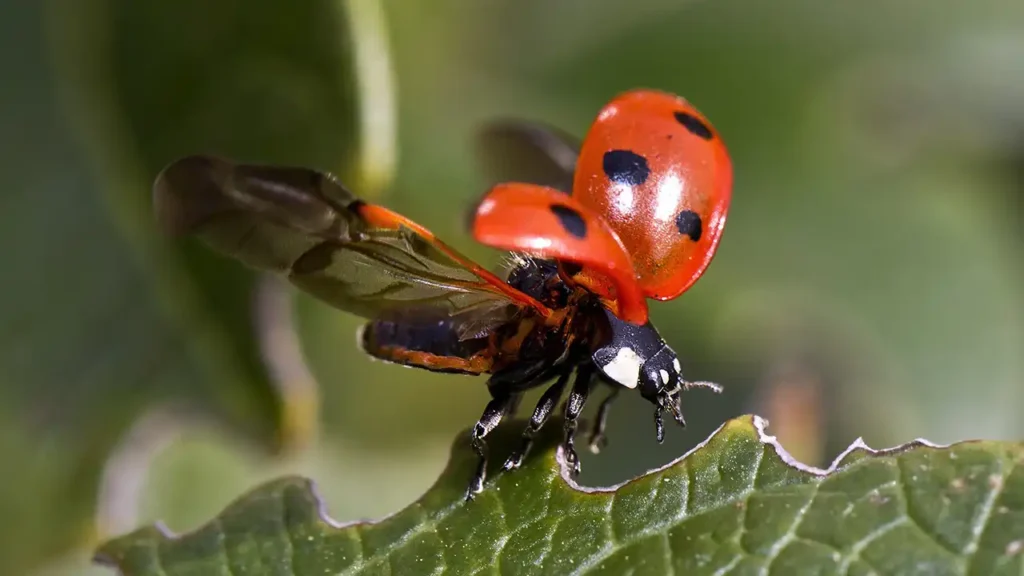
Ladybugs have a secret identity – they are talented fliers! Hidden under their spotted shells are a pair of delicate wings. When a ladybug takes off, these wings move at super speeds.
A ladybug’s wings beat up to 85 times per second. That creates enough lift for them to take flight. Just think how tiring that would be if we had to flap our arms that fast!
In flight, ladybugs can zip around at speeds over 60 miles per hour. That’s faster than you can run! They use their flight to forage for food, find mates, and escape from predators.
Their ability to fly helps ladybugs spread out and discover new habitats. It also lets them swarm together in huge migrating groups. So watch the skies – you may spot a ladybug soaring past!
Next we’ll explore who are friends or foes of our ladybug heroes. But whenever you see a ladybug fly, make a wish and let it carry your dreams up high!
Ladybugs and Their Friends and Foes
Friendly Neighbours
Ladybugs get along well with many other creatures in their habitats. Their bug buddies include:
- Butterflies – Ladybugs don’t nibble on these winged beauties. Butterflies can swarm with ladybugs on migrations.
- Bees – Bees help flowers thrive, giving ladybugs more juicy plants to eat aphids on. Ladybugs don’t bother busy bees.
- Green lacewings – These lovely green insects also feast on aphids, teaming up with ladybugs to control pests.
- Praying mantises – Mantises hunt larger insects, so they don’t compete for ladybug food. Plus mantises eat ladybug predators!
Ladybugs coexist peacefully with animals like birds, frogs, and spiders. As long as they don’t get eaten, these species make great garden neighbours!
Having allies makes survival easier for ladybugs. We should protect beneficial insects and creatures that help ladybugs thrive. More friends mean more superheroes guarding your backyard!
Danger Ahead!
Though mighty for their small size, ladybugs do face threats from predators wanting to gobble them up. Their main enemies include:
- Birds – Sharp-eyed birds spot ladybugs and swoop down for a protein-packed snack. Ladybugs try hiding in vegetation to avoid becoming bird food.
- Spiders – Ambush predators like spiders will catch ladybugs in their sticky webs. Ladybugs struggle to escape the strands.
- Wasps – Crafty wasps sting and paralyze ladybugs, then carry them back to feed their young. Ladybugs try to fly away or play dead if wasps attack.
- Frogs and lizards – Leaping frogs flick out their tongues to grab ladybugs as they pass by. Lizards munch the beetles for dinner.
- Ants – Fierce ants swarm over ladybugs in huge numbers and dismember them. Ladybugs avoid ants to prevent this horrific fate!
Ladybugs defend themselves from enemies by oozing foul-smelling yellow fluid from their legs. But they must still be cautious around these deadly predators. Stay safe, superhero ladybugs!
Why We Should Love and Protect Ladybugs
Little Helpers in Our Gardens
Now you know loads of cool facts about ladybugs and their tiny superhero abilities. But why exactly should we care about these speckled insects?
Ladybugs deserve our love because they are amazing helpers in our gardens! By munching on pests like aphids, ladybugs naturally protect our plants. A thriving ladybug population keeps flowers, veggies, and trees healthier.
Without ladybugs, annoying and destructive bugs would feast on crops and gardens unchecked. Ladybugs control pests without the need for artificial pesticides. That’s chemical-free gardening!
So if you find ladybugs in your yard, see them as natural defenders of your plants. Be sure to protect them and create habitats they’ll love. Ladybugs are the best organic pest control you could ask for!
Protecting Ladybugs
Now that you know how awesome ladybugs are, you can take steps to protect these tiny superheroes! Here are tips for being a ladybug ally:
- Provide natural habitats like native flowers, shrubs, and uncultivated land where ladybugs can thrive.
- Avoid pesticides so ladybug food sources aren’t contaminated. Stick to natural gardening.
- Let ladybug larvae live! Their odd looks may tempt you to remove them, but they’ll soon change into helpful adults.
- Build a ‘ladybug hotel” by filling a box with natural materials like sticks and leaves for them to overwinter in.
- If you find a ladybug inside, gently scoop it onto a paper and take it outside. Don’t crush or handle it.
- Spread the word about ladybugs’ importance so more people value them.
Take pride in being a ladybug guardian! Keep your eyes peeled for them in your garden, where they work hard as natural heroes protecting your plants.
Here is Section 6A with craft activity ideas about ladybugs:
Crafty Corner
Now that you know all about ladybugs, it’s time to get creative! Here are some fun ladybug crafts and activities you can make:
Ladybug Rocks
– Paint small smooth rocks red with black polka dots to create cute ladybug stones. Add eyes and antennae. Then hide them around town for your friends to find!
Ladybug Puppet
– Make a paper bag ladybug puppet. Decorate the bag red with spots, tape on googly eyes and pipe cleaner antennae. Put your hand in the bag to make the ladybug crawl and fly!
Ladybug Magnets
– Glue or tape a plastic ladybug onto a self-adhesive magnet strip. Cut them out and stick your new ladybug magnets on the fridge or anywhere metal!
Ladybug Terrarium
– Find a glass jar and add dirt, sticks, leaves and live plants. Catch a ladybug larvae and put it inside to watch it grow! Just remember to release the ladybug when it becomes an adult.
Let your creativity soar to build an entire ladybug universe! And send us photos of your ladybug crafts or stories – we may feature them here for all to enjoy!
How To Draw a Ladybug: Step by Step
Now you can follow along this super simple step-by-step guide on drawing your own ladybug. By the end you will have the coolest ladybird drawing around, and then get crazy with different colours and designs! Comes with FREE printable guide and Colouring practice sheet!
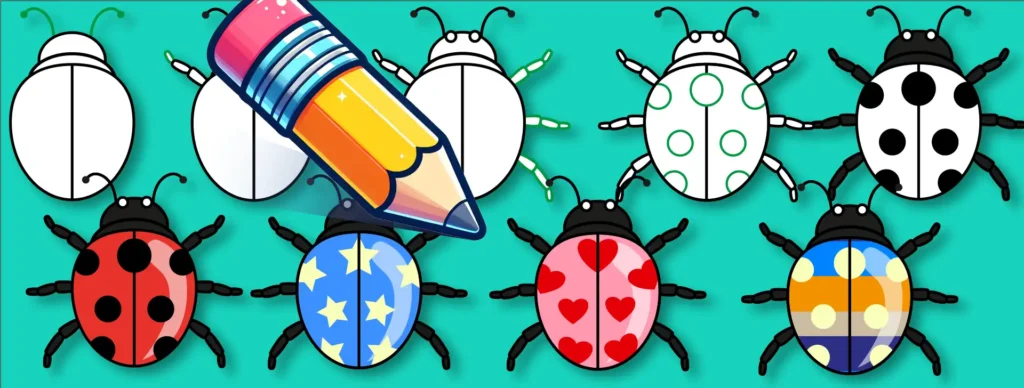
Conclusion
We’ve reached the end of our exciting adventure into the world of ladybugs! From their life cycles to their habitats and superpowers, ladybugs are incredible creatures.
Now you can see why ladybugs are so beloved in gardens. Their spotted shells and ferocious appetites make them living pesticides protecting our plants. Plus they are cute and fun to observe!
Always treat ladybugs gently if you get the chance to see them up close. Take pride in being their protectors and allies. Build habitats where they can thrive and gobble up pests naturally.
Ladybugs remind us that sometimes, the smallest beings can have the biggest impact. Though tiny in size, they make a mega difference by controlling insect pests and allowing gardens to flourish. Their polka-dotted shells hide the hearts of true superheroes!
So next time you see a ladybug soaring through the air or snacking on an aphid, remember how awesome they are. Together we can keep these miniature defenders safe so they’ll continue their essential work caring for our environment. Ladybugs unite!


